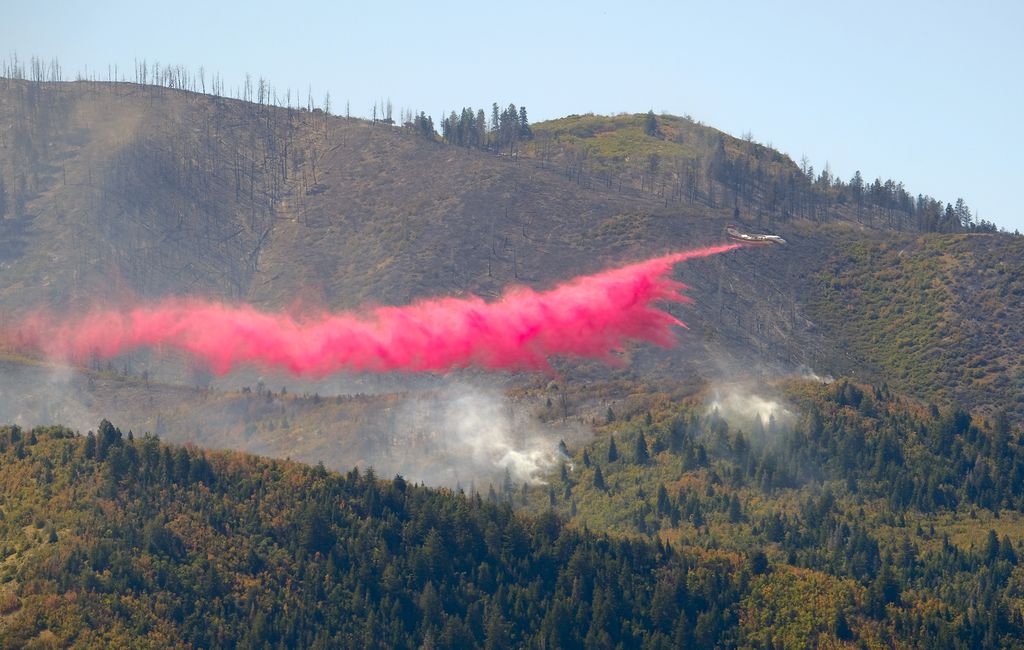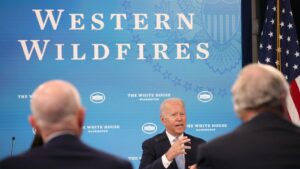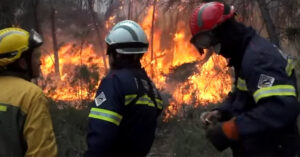
U.S. Forest Service faces lawsuit over wildfire damage from Pole Creek fire
Property owner faults agency for not putting out two remote fires in 2018 when it had the chance.
By Brian Maffly | March 22, 2023, 7:00 a.m
For the past several years, the U.S. Forest Service has tried to harness natural wildfires to improve forest health and wildlife habitat in the West’s forests, where decades of fire suppression have left many areas overgrown and cluttered with fuels.
The goal is to restore wildfire’s place in the ecosystem when it is practical and safe — but the policy occasionally results in unwanted, even catastrophic outcomes.
Should the Forest Service be held liable for damages to private property in cases where a “managed,” but otherwise naturally occurring wildfire gets whipped into an unmanageable destructive monster?
That question is now before a Utah federal judge hearing a lawsuit targeting decisions by the Uinta-Wasatch-Cache National Forest to not immediately suppress two late-season wildfires in 2018, as well as the policy directives that led to those decisions.
More than a week after their initial ignition by lightning, the Pole Creek and Bald Mountain firesblew up with the arrival of high winds on Sept. 13, 2018, and burned 100,000 acres, including private land, south of Spanish Fork Canyon. No homes or lives were lost, but the fire threatened two foothill towns in Utah County and cost millions to fight. About 6,000 people were temporarily displaced.
Now the Strawberry Water Users Association (SWUA) is seeking unspecified damages, alleging the Forest Service acted negligently and essentially “trespassed” when the flames spread onto its private land.
“The destruction included severe fire damage or post-fire flooding to public and private property downslope from the respective fires, some of which, in the form of flooding, terrain movement and landslides, continues to this day,” contends the suit. “The Forest Service planned alteration will plague local people, including SWUA, over the next decade as burned drainages and soils unravel, causing flooding and debris flows to damage roads and fences and deposit mud and debris on highways, block culverts, ruin driveways, and create havoc across the area.”
U.S. District Judge Jill Parrish is to hear arguments Wednesday on whether to dismiss the case.
The water association delivers water from Strawberry Reservoir to shareholders in Utah County. Its court filings do not divulge exactly what actual property damage it sustained on its land and installations as a result of the fire.
But it pulls no punches in condemning the Uinta-Wasatch-Cache (UWC) National Forest’s approach to the Bald Mountain and Pole Creek fires, which started near Mount Nebo on Aug. 24 and Sept. 6, 2018, respectively.
The UWC, which sees an average of 91 wildfires a year, features vast stretches of “wildland-urban interface” thanks to its proximity to Utah’s population centers along the Wasatch Front. But the two fires were remote enough that forest managers felt comfortable monitoring them, as opposed to immediately putting them out.
At the time, the weather and time of year were favorable for allowing them to burn and the Bald Mountain fire was burning in a dangerous spot for firefighters, according to the Forest Service’s analysis of the fire.
But a week after the Pole Creek fire started, a sudden change in the weather exposed how risky these choices can be. Pushed by high winds, the fires rapidly grew, merged and spread downhill toward the towns of Elk Ridge and Woodland Hills. The merged fire burned for another month. October rainstorms triggered debris flows.
Filed last year, the suit alleges the Forest Service let the two fires burn to achieve natural resource management objectives, then compounded this mistake by providing affected residents incomplete information, robbing them of a chance to mitigate the risks.
The water association brought the suit under the Federal Tort Claims Act, which allows for damage awards from the government under certain circumstances. Those circumstances are met in this case because the Forest Service failed to go through the appropriate processes when it adopted a policy of employing natural wildfire as a forest management tool, the suit alleges.
It blasts the Forest Service for “unilaterally impos[ing] a ‘fire restoration’ management regime on private and nonfederal public lands, resources, and communities nationwide.”
In its response filings, the Forest Service argued the federal agency enjoys “sovereign immunity” in this situation because the decisions UWC forest managers made in 2018 fell within their legal discretion of the agency’s policy framework.
“Firefighting is the quintessential government responsibility that demands a continual balancing of the need for firefighter and public safety, the availability of personnel and resources to suppress a fire, and the ecological impacts of fire to lands managed by various jurisdictions,” it wrote in its filings.
Following the Pole Creek debacle, the Forest Service has been more aggressive in attacking fires in Utah. That approach is also not without its risks, as shown in 2020 when the small crew who was first on the scene of a remote 10-acre fire in the Uinta Mountains became trapped when that fire suddenly blew up.
The five firefighters were rescued by a helicopter assigned to drop water on what became the East Fork fire, eventually burning 90,000 acres in the Ashley National Forest before the arrival of winter put it out.



